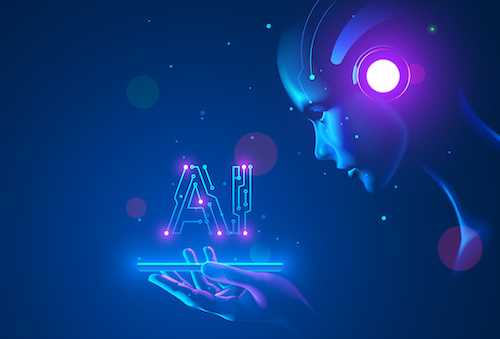Key points:
- Most teachers support the use of AI in education, but need help using it
- See article: Everything you need to know about AI in education
- See article: In 2024, education will move to adopt AI—but slowly
- For more news on AI in education, visit eSN’s Digital Learning page
The majority of teachers are enthusiastic and eager about the potential of AI in education and incorporating AI in the classroom, but remain unsure of where to start, according to a new study from Canva.
What is the importance of AI in education?
Teachers recognize the transformative potential of AI tools for education, but still need support and professional development to effectively incorporate it into their teaching practices.
“These findings underscore teachers’ genuine excitement about the promise of artificial intelligence and the huge potential this technology has in the classroom. Teachers are looking to supercharge their lessons, foster creativity, and cut down on manual administrative tasks. It’s no surprise artificial intelligence is top of mind for educators across the globe,” said Jason Wilmot, Canva’s Head of Education Products.
What are the advantages of AI in education?
Canva’s study found 78 percent of teachers are interested in using AI education tools, but their experience with the technology remains limited, with 93 percent indicating they know “a little” or “nothing” about it – though this lack of experience hasn’t stopped teachers quickly discovering and considering its benefits:
- 60 percent of teachers agree it has given them ideas to boost student productivity
- 59 percent of teachers agree it has cultivated more ways for their students to be creative
- 56 percent of teachers agree it has made their lives easier
Teachers are particularly optimistic about the positive impact of artificial intelligence on students with different learning needs with 72 percent percent of respondents agreeing the technology could help with language learning, and 67 percent agreeing it could support universal accessibility.
“This technology has the potential to have a profound impact on the way teachers are able to personalize content to meet the needs of individual students, no matter where they are in their learning journey,” Wilmot added.
How is artificial intelligence used in education?
The study affirmed the increasingly important role of technology in the classroom and the future of AI in education, with 92 percent of teachers using apps or services in their teaching, and 78 percent using those apps at least weekly. When looking at the ways teachers are already using generative artificial intelligence, the most common uses were:
- Creating teaching materials (43 percent)
- Collaborative creativity/co-creation (39 percent)
- Translating text (36 percent)
- Brainstorming and generating ideas (35 percent)
“AI is something I’m learning alongside of my students. I know my students need to learn it and we need to tie the tools to pedagogy for it to be useful in the classroom,” said George Lee, a high school teacher in San Francisco, California. “It serves as the spark to ignite my students’ curiosity and creativity to further ideate. This is especially true for students who lack resources and experiences. I see AI as a tool that levels the playing field for all my students.”
What will be the future of AI in education?
As this technology continues to develop, educators remain optimistic about its various applications in the classroom and finding the best AI tools for teachers. Canva’s study found teachers are most interested in using artificial intelligence for:
- Simplifying language (67 percent of teachers interested)
- Summarizing information (62 percent of teachers interested)
- Generative art (63 percent of teachers interested)
- Data visualization (66 percent of teachers interested)
- Image and video manipulation (63 percent of teachers interested)
“AI is transforming education, and teachers clearly see its value,” said Carly Daff, Canva’s Head of Teams and Education. “We are thrilled to meet this need by bringing AI features to Canva and training teachers to use it, all while modeling safe, responsible, and thoughtful AI implementation.”
In response to this demand, Canva announced its biggest-ever education launch, which includes Classroom Magic, a suite of free AI-powered tools designed with teachers and students in mind. With more than 60 million teachers and students using Canva around the world, this was a sea-change event for AI in education. Unlike other AI tools for schools, Canva’s support educators with their day-to-day duties—everything from administrative tasks to writing lesson plans, designing presentations, and creating high-quality animations with the help of AI.
This poll was conducted by Morning Consult from Aug. 6-11, 2023, among a sample of 1,004 educators in the U.S. The interviews were conducted online, and the data were weighted to approximate a target sample of educators based on age, race/ethnicity, gender, educational attainment, and region. Results from the full survey have a margin of error of plus or minus 3 percentage points.
This press release originally appeared online.
- Friday 5: Virtual field trips - April 26, 2024
- Google, MIT RAISE launch no-cost AI training course for teachers - April 26, 2024
- 4 ways to support work-based learning - April 23, 2024

